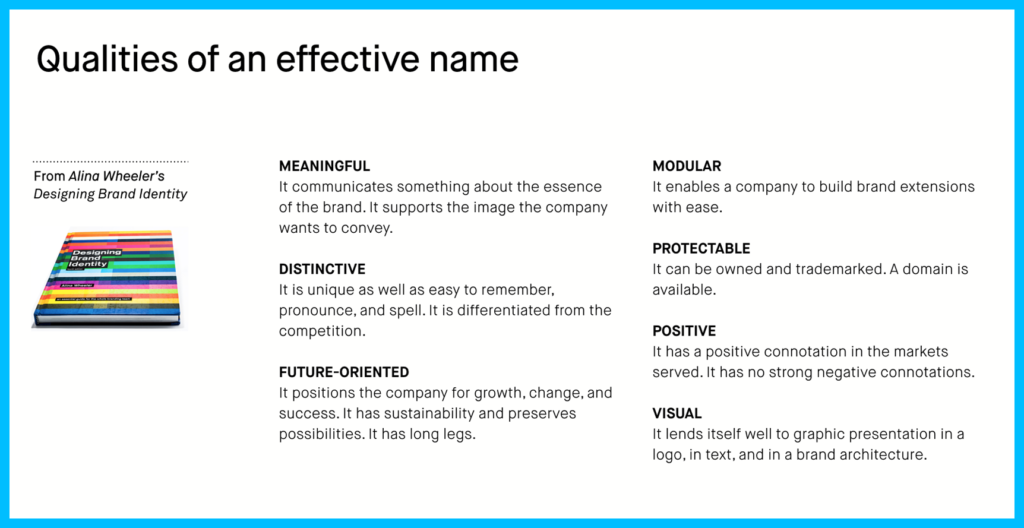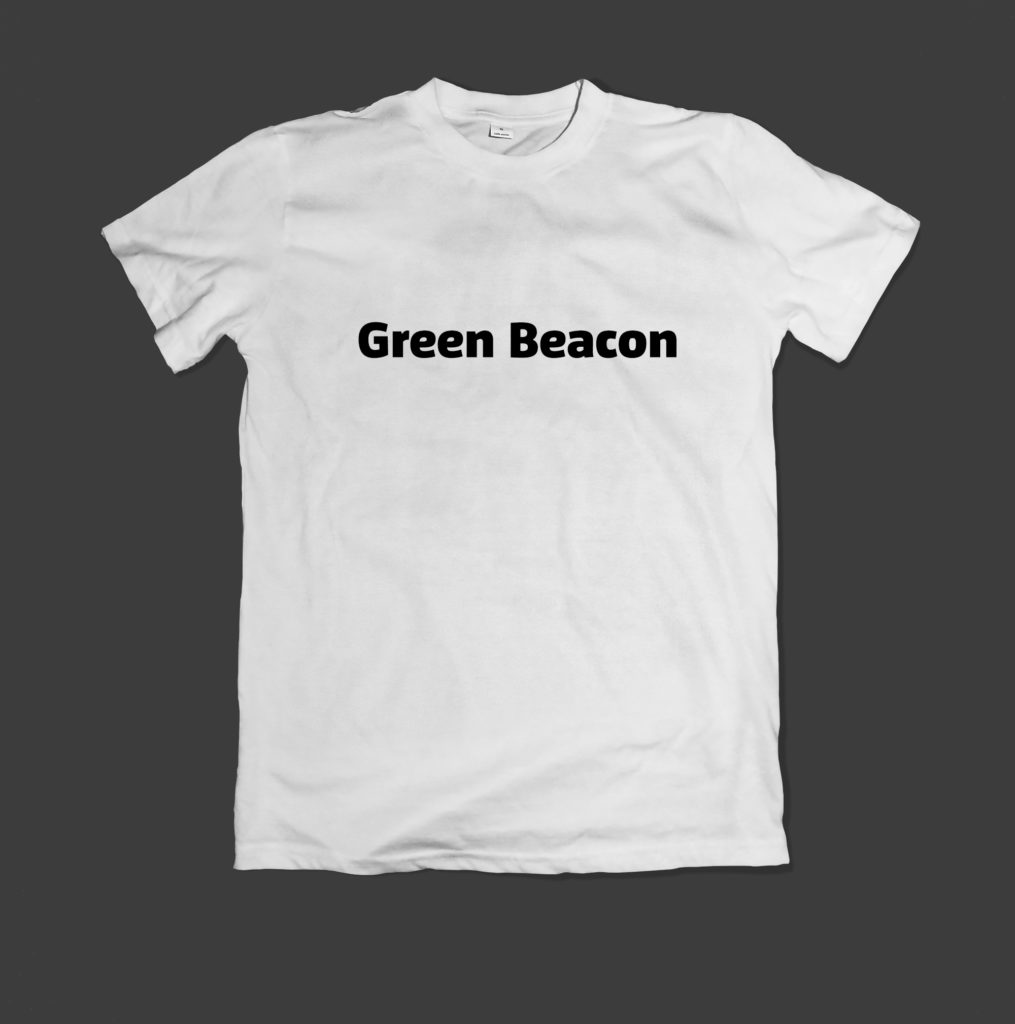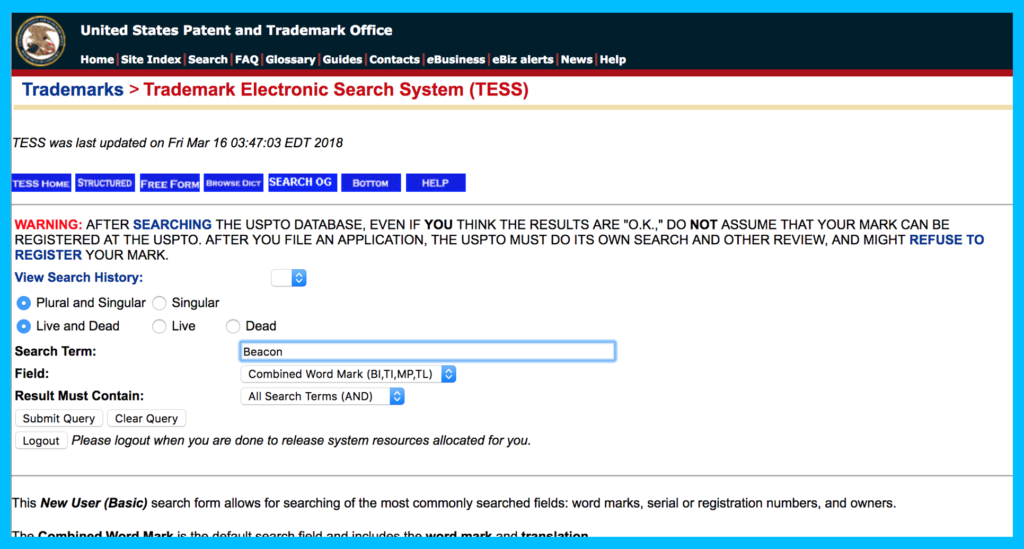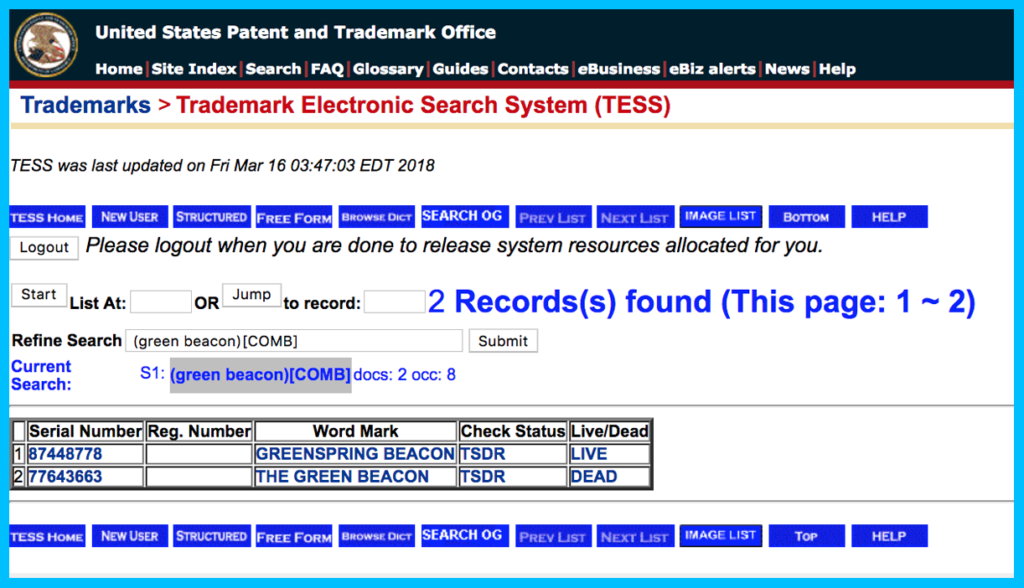Naming a startup that scales, Part 2: Picking a winner
Note: We suggest reading Part One if you haven’t already before jumping in here for Part Two.
Step 3: Sort contenders from pretenders
There’s no hard-and-fast rule as to how many name candidates constitute “enough.” Your brainstorm, whether it took place over the course of a couple of hours or a couple of weeks, should aim to produce enough names that you and your team feel confident you’ve got a lot to work with—while knowing full well you’ll never be able to come up with every possible name under the sun.
Is it 50 names? 100? 200? 500? In the end, it’s really your call. Just be sure you have enough raw material that in this next phase, when we separate the wheat from the chaff, you can make decisions with confidence.
The attributes we identified in Step 1 are now used as our measuring stick to determine which names are viable contenders and which are destined for the cutting room floor. Take each name option and ask yourself, “Does this convey [attribute]?”
Remember our hiking trail discovery app example from earlier? Our attributes Curiosity, Adventure, and One With Nature guided our brainstorm. Now we’ll use them to refine our options.
Let’s say one name candidate is “Beacon,” which would get high marks for conveying the Curiosity and Adventure attributes, but doesn’t have a lot to do with One With Nature. A name option like “Greenleaf,” on the other hand, conveys the One With Nature attribute really well, but doesn’t have a lot to say about Curiosity or Adventure.
TIP: Assign each name option a numerical score or letter grade for how well it conveys each of your attributes. When you’re through the whole list you’ll be able to compare apples to apples.
The bullseye we’re aiming for are name candidates that strongly convey each of your attributes. In reality, it can be tough to tick every box given all the great things you want people to know about your company or its product, but that’s what we’re shooting for.
As you make your way through your name options, remember to embrace serendipity. Ideally the perfect name will emerge from the strategic, step-by-step process we’ve outlined here, but sometimes the best ideas emerge from unexpected places. Case in point: Old Navy. The clothing brand, originally called Gap Warehouse, took its name from a bar in Paris that its CEO saw while on vacation.
Author Alina Wheeler outlines the qualities of an effective name in her book, Designing Brand Identity, which will give you even more ways to evaluate the quality of the options you’ve come up with:
Last but not least, if you fall in love with a name, but it’s already taken… don’t fret. Return to the Paths of exploration exercise above and consider alternate spellings, abbreviations, contractions, or other ways you could keep pieces of the original option you like while still creating a new and differentiated name you can claim as your own.
By the end of this phase in the process, you’d hope to have between 5 and 10 potentially viable candidates to move into the final stage for consideration.
Step 4: Make it real
In theory, your company name is just that: a name. Little more than the letters you choose arranged in the right order.
In practice, there’s a heck of a lot more to it than that. Consider one of the examples we discussed in Part One, Spotify. A company, sure, but also a desktop and mobile music streaming application, and a sponsor of dozens of music events each year, an employer with new hire materials to share with its team. All of these touch points are places where your brand—its name, its story, its visual identity—are experienced every day.
Once you’ve narrowed your list to a handful of final candidates, have a designer (or someone with a passing Photoshop competency) create visual mockups with each name on them. Don’t go to any extra lengths—no unique fonts, no accompanying logos, etc.—that would unfairly sway you in one direction or another. Our goal is to evaluate the names themselves, not any of the associated pieces. Use a simple font like Helvetica, Open Sans, or Arial for each candidate.
Here’s a list of visual exploration pieces we often mock up at this stage of our naming process:
- T-shirts
- Mugs
- Window decals
- Laptop stickers
- Business cards
- Social media handles
One of the most important ways to test a name candidate? Let it marinate. It’s rare that a name wins your heart on first hearing. Sing it in the shower. Use it when practicing your elevator pitch to your cat. Pretend you’re introducing yourselves to the world on stage at TechCrunch Disrupt. The more you say it out loud, to yourself, to anyone who will listen, the more you’ll have a sense of whether you could really see it working for you.
Step 5: Own it
Brace yourself. This final step in the naming process is often the most painful.
By now, it’s possible you’ve fallen head-over-heels for a favorite candidate. It sounds great. It expresses what you want to say about your business or the product you’re selling. It gives you all the right warm-and-fuzzies. Your mom likes it. But before you put a ring on it, you need to conduct some final due diligence to make sure your new name is ownable from a brand perspective and protectible from a legal standpoint.
A few words on trademark availability
The worst case scenario would be to invest all this time and energy into coming up with a great name that everyone loves—only to find out another party has laid claim to the trademark, rendering all your hard work meaningless. Let’s avoid that, shall we?
Retaining the services of professional legal counsel is the safest approach to ensuring your name is yours and yours alone. And if your budget allows, we definitely recommend it.
We realize, of course, that for many entrepreneurs every dollar is precious, and a couple thousand bucks isn’t a luxury you can afford. The good news is many of the resources attorneys use to check whether a name is trademark-able are also available to the general public.
The first and most important resource is our good friend TESS, the Trademark Electronic Search System created and operated by the US Patent and Trademark Office. There you can plug in your would-be name and search against their massive database of trademarks officially registered with the US Government, as well as check against international registrations. It’s admittedly not the most elegant or intuitive site, so just focus on conducting a “Basic Word Search” for “Live and Dead” registrations—that should cover most of the bases we care about.
Continuing our earlier example, if we search the database for “Green Beacon” (a name option from your brainstorm that the team thinks conveys your chosen attributes pretty well) we see there are only two registrations in the database to be aware of:
Only one option, Greenspring Beacon is still an active registration (marked LIVE in the last column). The other, The Green Beacon, is DEAD and therefore not likely to create any complications for us.
All in all, it looks like “Green Beacon” is pretty free and clear from a trademark standpoint. As a quick note, if you search the database for “Beacon” alone, you’ll find some 1,365 total registrations… which further underscores the benefits of having a differentiated name.
Not out of the woods yet
Even if the name you’ve chosen is clear from a trademark standpoint, that doesn’t always mean it’s yours to own from a brand standpoint.
Beyond the legal viability of your new brand name, you’ll want to be sure that it doesn’t pose any connotative issues. There’s nothing worse than falling in love with a name, getting it cleared by legal, and then finding out that your name is synonymous with something you actually don’t want to be associated with.
The good news is the due diligence process isn’t as scary as it sounds. You may even get bonus points from your legal team for your valiant efforts to supplement their own diligence (and you’ll probably learn some unexpected fun facts about random things as you dive into the depths of Google).
With your remaining top name candidates (all of which should jive with your chosen brand attributes, and which should have survived the wrath of TESS), create a document that is easily shareable amongst your team. Google Docs works perfectly—it makes collaborating with other members of your team super easy, and ensures that everyone has visibility into your latest thinking in real time. Create tables where it makes sense, and be sure to link to any interesting findings you uncover so that you can revisit them later.
For each remaining name candidate, you’ll want to thoroughly investigate the following areas:
- Adjacency
- Risk of mispronunciation
- Pejorative associations
- Translations and cultural connotations
- Urban Dictionary / slang
- Social media handles
- SEO / SERP considerations
Embrace the Internet wormhole and settle in for a fun afternoon of Googling!
Adjacency
Are there any companies, organizations, or things that share a common word part or root with your name? And are any of them problematic? Does it look like you’re playing too closely in the same space as a competitor with a similar name? Do you see trends in the types of companies that are using a similar name, and does it make sense for your brand to be in that same arena? Do you see anything inflammatory or notice any adjacencies that could turn into hot-button issues? Using our hypothetical Green Beacon example, the first few lines of this section might look something like this:
| NAME | DESCRIPTION |
| Green Beacon [Brewery] | Microbrewery in Australia |
| Green Beat / Greenbeat | Holistic nutrition center / Health food cafe |
| Green Bacon (hypothetical) | Soy-based pork alternative (hypothetical) |
Homonyms
What words sound the same as your name? Make note of all of the homonyms you think of or find in your research. Homonyms might give you strife when you find yourself in business discussions or when you’re telling people about your company for the first time. If you find yourself having to spell out your company’s name for every person you meet (because it sounds too much like another more widely-used word), you may want to ask yourself—and your team—whether that’s something you’re okay with or not.
Risk of mispronunciation
How easy or difficult is it to pronounce the name? Grade the name candidate on a simple scale: Low, Medium, High. Make additional notes if necessary—is it a name that’s easy for native English speakers to pronounce, but which poses issues for non-native speakers? Jot down things like that.
Pejorative associations
Are there any curse words that look or sound similar to your name, or that could be unintentionally associated with your name? Any pejorative or derogatory variants you should be aware of? Any other alternate associations you should be aware of that you may have missed in your initial brainstorm? Get it all down in writing—as cringe-worthy or uncomfortable as it may be.
Translations and cultural connotations
Does your name translate into anything unsavory in other languages? Be sure to look at literal translations and definitions as well as cultural connotations. If your name falls further on the arbitrary or invented side of the spectrum, consider completing this exercise for the name you’ve chosen plus any homonyms that are used or recognized internationally. Be sure to tailor which languages and cultures you include in your searches for your specific business and where you plan to operate. Here’s a short list of the most spoken languages in the world to get you started:
- Chinese
- Spanish
- Hindi
- Arabic
- Portuguese
- Bengali
- Russian
- Japanese
- Punjabi / Lahnda
- German
- French
Urban Dictionary / slang
And here you were thinking that Urban Dictionary was only a thing in high school! Knowing whether there’s any slang floating around with negative implications for your name is important, particularly when you’re dealing with diverse audiences. So jot down any definitions you find on Urban Dictionary—but take them with a grain of salt. A decent indicator of whether what you find might present problems down the road is how many “likes” the definition has on Urban Dictionary. Added bonus: This exercise will help you stay in the know about what the “kids” are saying these days.
Social media handles
What social channels are you planning on using? Be sure to check the availability of your username of choice, and be open to trying out some alternatives if your first choice isn’t available. Namechk is a great tool for this—it scrapes the web and shows you whether there are matching domains or social handles available with your username of choice. Here’s a starter list of social platforms to consider keeping an eye out for (there may be others, depending on your business):
- Snapchat
- Slack
- GitHub
SEO / SERP considerations
When you search for your name in Google right now, what shows up? Be sure to capture screenshots and make note of anything that could pose a challenge in terms of search rankings. Include images as well! It’s also a good idea to note any paid results that pop up in your search. This will give you a good idea of who is bidding on your name or keywords that are closely associated with your name—so that you know how much money or effort you’re likely to spend on those things yourself in the future.
Final step: Pick a winner!
You did it! You’re almost ready to get the ball rolling on claiming your name and getting it out into the wild.
Take look at your due diligence document. Consider all of the pros / cons you uncovered during your exploration. Share it with the key decision-making team within your company and set up time for everyone to come together and think it through. If you have a lawyer or legal team handy, be sure to share it with them too—they’ll have great insight into whether the conflicts (if any) you’ve uncovered are something you should be worried about or not. Nix the option(s) that no longer feel right or have too many “dealbreaker” connotations or associations.
And now all that’s left to do is decide.
If you’re having trouble choosing a name amongst your remaining viable options, consider returning to our mockup exercise. Put each name on a t-shirt, a mug, a laptop sticker, a window decal. Remember, no additional design or branding! You want to give each candidate a fighting chance based on the name alone.
You could even schedule a trial period (a week or two should do) to feel out the name you’re leaning towards. Pretend that it’s actually your name, and take stock of how each of your key stakeholders behaves when he or she says it. Run it past your family and friends. Tell your dog about what you do at [Company name]. Does Fido seem to dig it?
Chances are you’ll fall in love with one of your name candidates soon enough. Your team may unanimously rally behind it, or it may be a slightly more painful process where one person’s favorite gets 86’d.
Either way, if you’ve followed this guide, you’ll end up with a great name that’s grounded in solid research—and that’s true to the core of your organization.
If all else fails, ask the experts.
Here at New Kind we’ve taken on naming projects for organizations big and small–to name entire companies from scratch, to name products that need to fit within an existing brand, and even to name events like branded conferences and trade shows.
We’d love the opportunity to put our proven, strategic, and collaborative naming process to work for your organization.
If you’d like to learn more about New Kind or discuss a potential project, get in touch today.



